OpenVox Unified Communications Platform

What a loud headline you say. New PBX manufacturer on Asterisk? Not really, but the equipment is quite fresh and interesting.
Today I want to tell you about the unified communications system Openvox, and it looks like the manufacturer has his own vision of combining these very communications :)
Equipment maker OpenVox slowly but surely moved to a fully modular structure. First, he made GSM equipment, where you could use different combinations of modules and their number, then analog gateways appeared, and finally a fresh platform was introduced with support for almost all the necessary telephone connection standards: FXO / FXS / E1 PRI / BRI / GSM / 3G / LTE
Anyone interested, please under the cat
So, there is a chassis - height 2 units, dimensions 43 cm x 33 cm x 8.8 cm, it has 11 slots for installing additional modules, each slot for one module. The slot numbering is represented directly on the front panel.
What types of modules are there at the moment?
E1 interface
The Openvox ET200X module allows you to connect from 1 to 4 E1 digital streams. Additionally, it can be equipped with an Octasic card for hardware echo cancellation.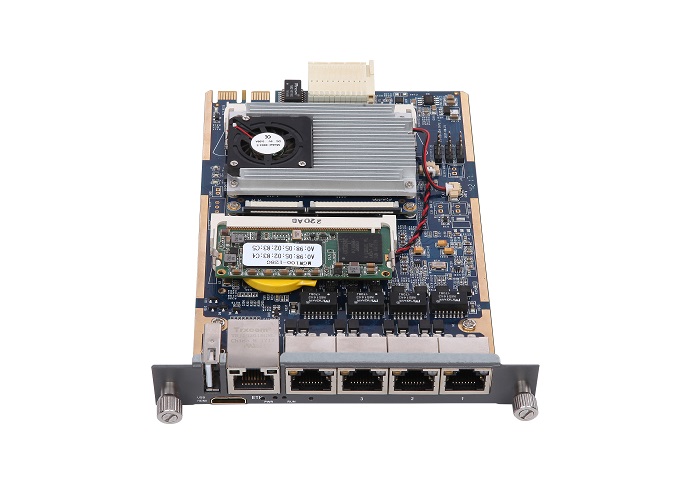
| ET200X modules | |||||
| Model | ET2001 | ET2002 | ET2004 | ET2001L | ET2002L |
| E1 / T1 Port | one | 2 | four | one | 2 |
| Hardware Echo | Yes | Not | |||
| The size | 100 * 162.5 mm | ||||
| Weight | 210 gr | 216 g | 226 gr | 202 gr | 207 gr |
The modules have 1 10/100 Mbps network port and a USB port for disaster recovery software, as well as LEDs to show the connection status. Supports PRI / SS7 / R2 protocols, datasheet with more detailed technical description is also available. Inside there certainly is Asterisk, as in the best traditions of Openvox.
Analog Interfaces
The manufacturer has released 3 versions of modules for connecting analog lines.
VS-AGU-E1M820-O on 8 FXO for connecting external lines.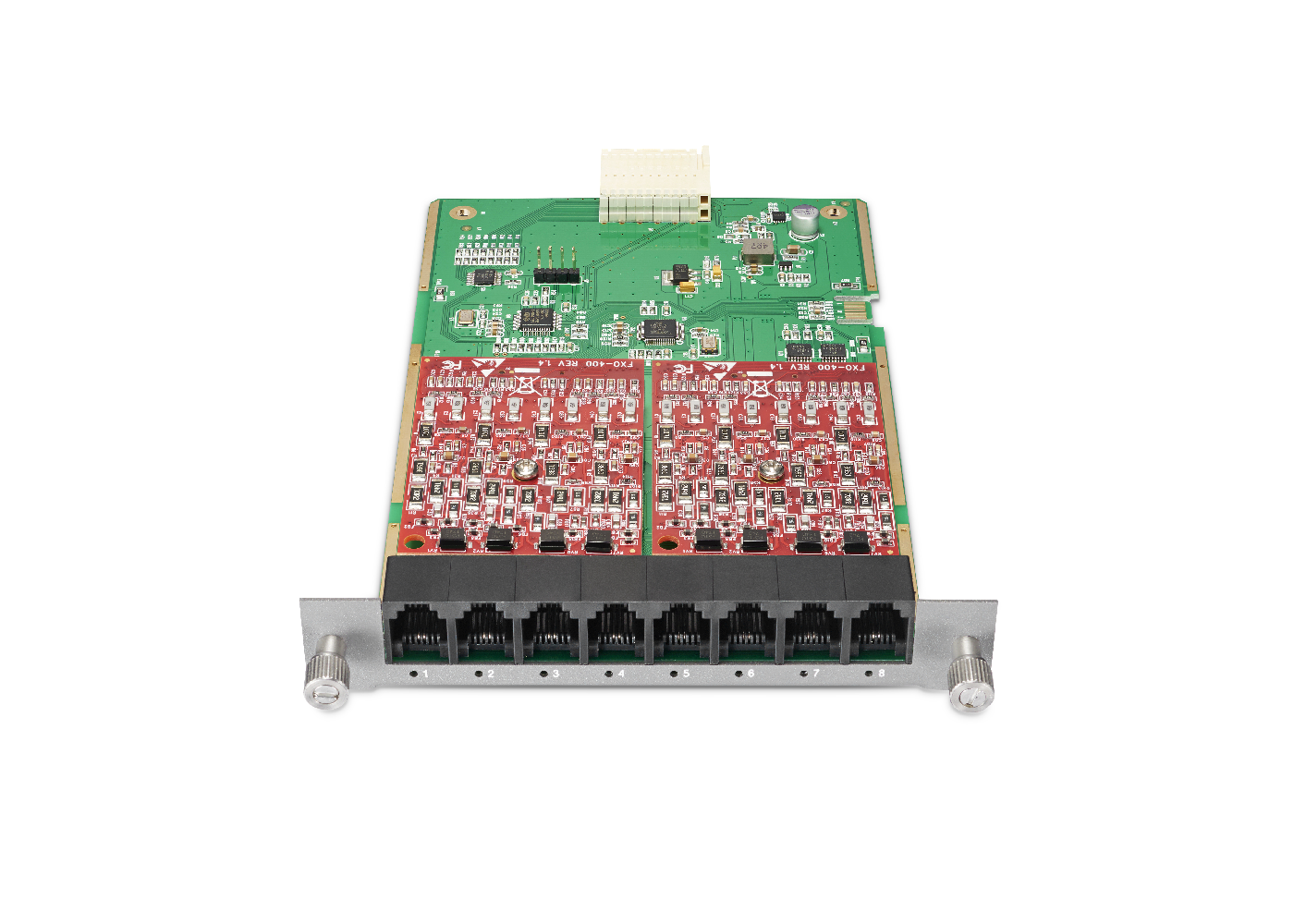
VS-AGU-E1M820-S on 8 FXS for connecting internal telephone sets, fax machines, for example, or low-cost DECT base stations.
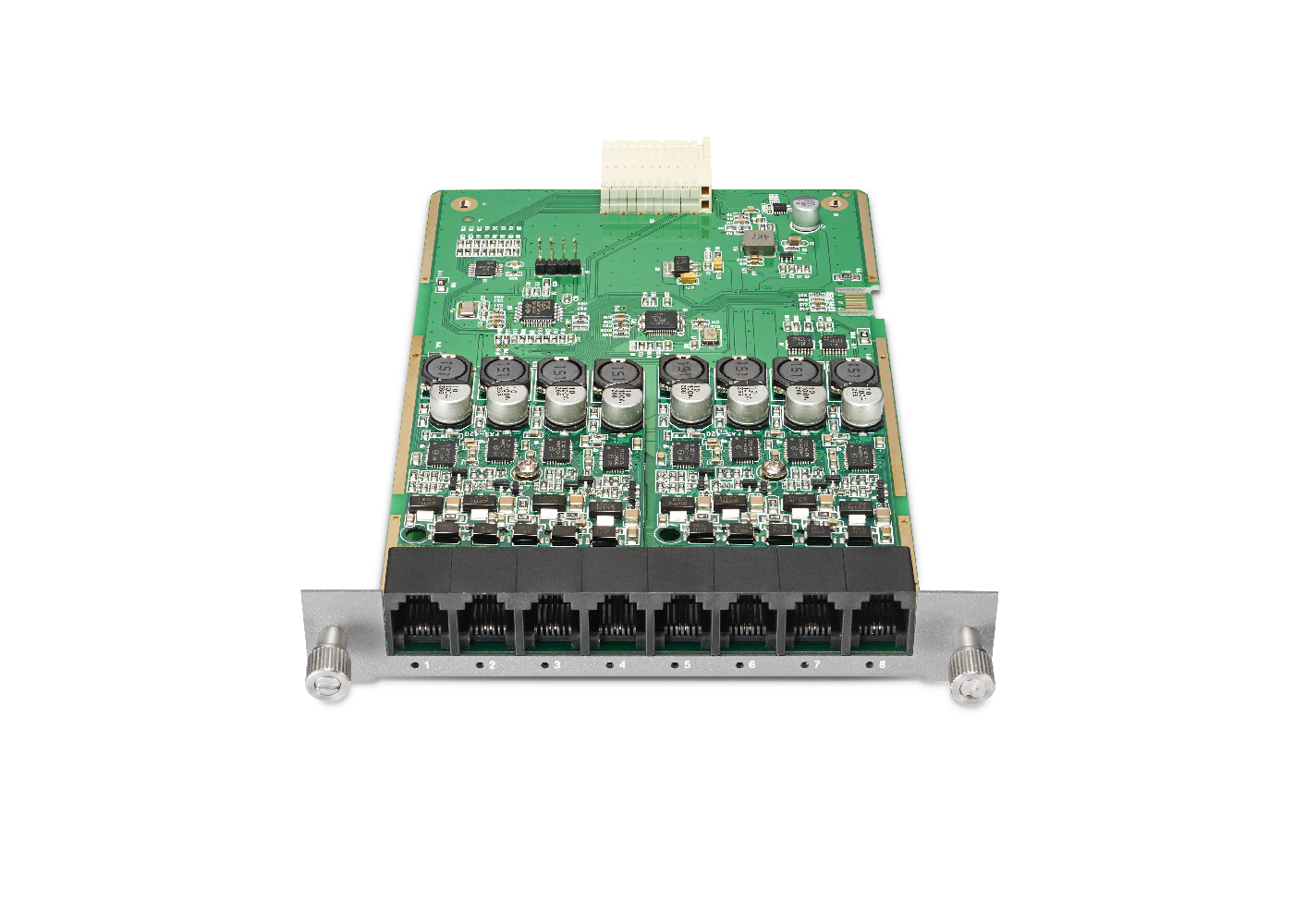
and VS-AGU-E1M820-OS mix on 4 FXO and 4 FXS lines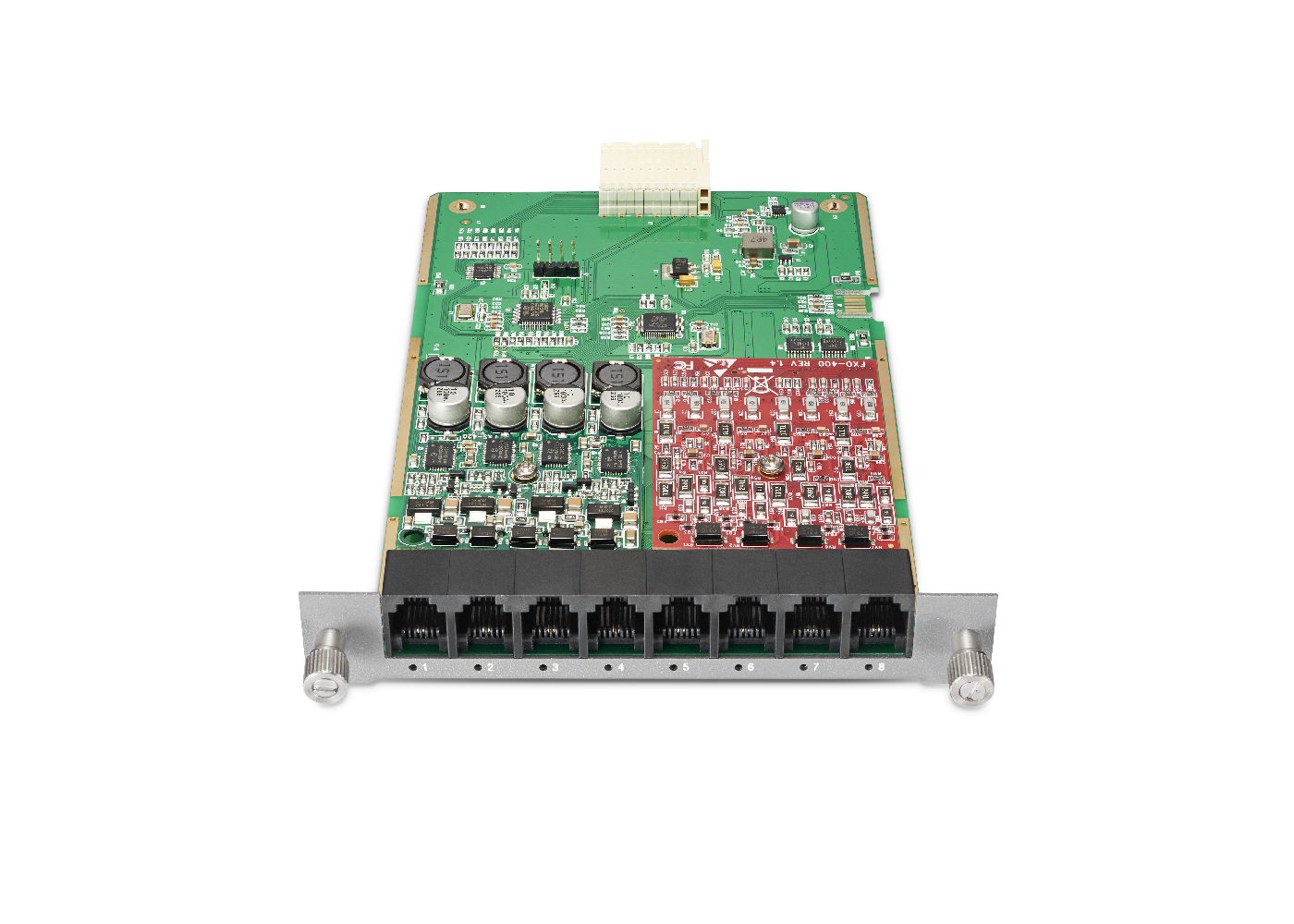
GSM interfaces
The most current GSM / 3G / LTE modules are supported: VS-GWM420G / VS-GWM420GW-E and VS-GWM420L-E, respectively.
I examined them in more detail in a previous article.
Module with Intel Celeron VS-CCU-N2930AM processor

Yes Yes. This is a full-fledged 64-bit computer, based on the Celeron N2930 processor with 4 cores and a frequency of up to 2.16 Ghz. The default SO-DIMM memory bar is 2 GB, but you can expand DDR3L 1333 up to 8 GB.
SSD drive is 16GB soldered on the board. Two network interfaces are available, one for 10/100 / 1000Mb and one for 10 / 100Mb. One VGA output for an external monitor, and two USB interfaces, for example, for uploading a backup or storing conversations.
If you don’t have enough internal memory, you can expand it with the VS-CCU-500HDD hard drive module, which looks like this:
500 GB are shipped by the manufacturer by default, I think it will be possible to install a disk with a capacity of up to 2 TB without any problems.
And so we smoothly approached the installed software.
This module, like any other (3G / FXO / FXS / E1) in this chassis, is completely autonomous. Separately downloaded, updated and has a separate IP address. In the case of VS-CCU-N2930AM, even separate network interfaces.
Openvox promotes the open unified communications system Issabel , which is the fork of the Elastix project. I do not need to do a survey of Issabel, since in fact it is almost no different from the well-known Elastix.
Let me remind you for those who are not familiar with open phone software:
- Unlimited SIP subscribers
- Unlimited external SIP trunks
- Integration with external systems via API (AMI / AGI / ARI)
- No fees for software and further support
- The need for direct hands to install
issabel*CLI> core show version Asterisk 13.18.5 built by issabel @ issabeldev8 on a x86_64 running Linux on 2017-12-29 18:27:48 UTC 
In my opinion, FreePBX distro will be more functional and more attractive thanks to the panel for users and extensions in the form of paid modules.
Officially, the list of operating systems is as follows:
Elastix 2.5 x86_64
Elastix 4.0 x86_64
Issabel-20170714 x86_64
FreePBX-1712 x86_64
But since, we have a full-featured X86_64 computer, albeit in such a compact version, you can easily install CentOS / Ubuntu / Debian together with pure Asterisk or, for example, the OS from MIKO - Askozia.
When installing these modules in different slots of the chassis, you must adhere to the following manufacturer's table:
| slot | available module |
| 0 | Network module (included) |
| one | a |
| 2 | a / b / d |
| 3 | a / d |
| four | a / b / d |
| five | a / b / d |
| 6 | a / b / c / d |
| 7 | a / d |
| eight | <a / b / d |
| 9 | a / b / d |
| ten | a / b / c / d |
| eleven | a / d |
Where
And these are modules for sim cards and analog lines (GSM / FXO / FXS)
B are modules for E1 flow
C is an HDD expansion module.
D is a module with a Celeron processor.
Use cases
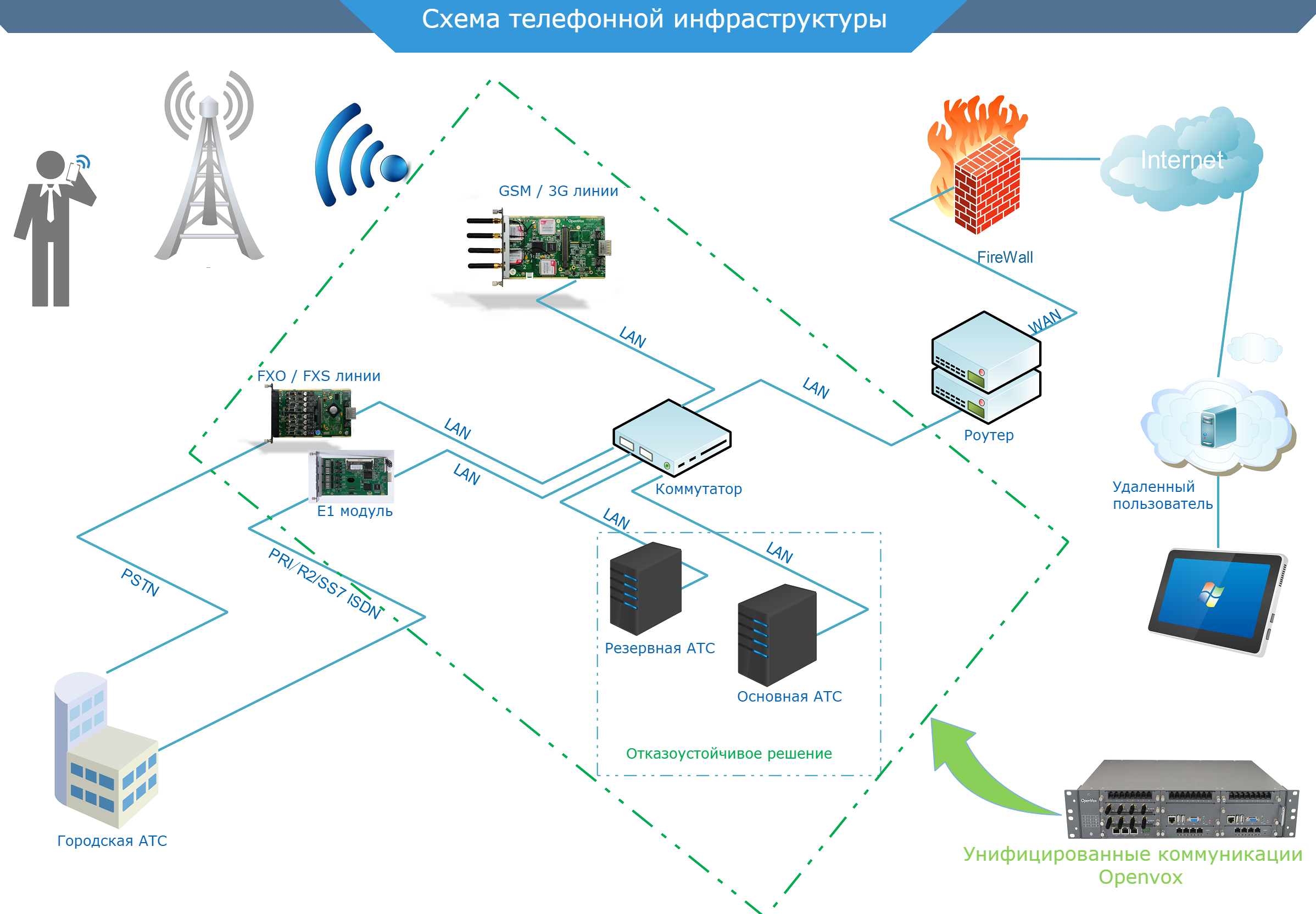
This diagram shows that all plug-ins in the system have their own IP address, and are managed separately. In the software (FreePBX / Asterisk / Issabel) you connect all lines: digital, analog or mobile, via sip trunk.
This is extremely convenient, if suddenly in the future you want to use some cloud PBX provider, then your infrastructure will already be ready for this.
Conclusion
The system is compact and energy efficient, suitable for medium and large businesses who want to get the device all in one. At the moment, there is a lack of automatic configuration of all these modules, that is, there is an acute shortage of its own software PBX.
I believe that the right development vector is FreePBX with its own software add-on to automatically configure your own gateways / phones / hardware modules.
The cost of the solution is quite affordable. Chassis ~ $ 400, module with processor $ 549, module E1 $ 549, 4 GSM lines - $ 420, Module for 4 FXO and 4 FXS lines - $ 240
Total for ~ $ 2200 you get a full-fledged telephone system of unified communications, which does not tie you to the used devices, nor to the monthly subscriptions or other equipment.
Buy equipment, you can at the official representative of OpenVox in Russia
Update: there are temporary restrictions on the simultaneous operation of analog modules and GSM modules. You need to choose one thing :) Or use the modules of the first generation
')
Source: https://habr.com/ru/post/445344/
All Articles